After almost two years, The Great Stephen King Reread is back, and this time I’m not stopping until I reach the absolute end. Which is kind of the way publishers feel about issuing collections of King’s short stories. You understand their impulse to put out absolutely everything King ever wrote since it all makes money, but sometimes that results in books like Everything’s Eventual. Consisting of all the previously uncollected short stories written by King, there are no new stories in this book. There are some good stories in EE, a few stinkers, and a handful of well-executed yawns, but the stinkers and yawns outnumber the good stories four to one. Rating this against other King short story collections, Everything’s Eventual comes in last.
In 2007, King edited the annual Best American Short Stories collection and said that it reignited his talent for writing short stories, something he’d lost after years of focusing on very long novels. I reckon the stories in this collection were mostly written during that fallow period since ten of the fourteen were written in a seven year period (1995 – 2001) when he published nine novels. Call this The Stephen King Deja Vu Collection because every story in here feels like you’ve seen it someplace before.
King’s a big fan of foreshadowing and he often teases readers with ominous sentences dropped into early chapters that read along the lines of, “Julia Shumway ate the tunafish sandwich, not knowing this would be the last tunafish sandwich she’d ever eat.” Often he’ll flash forward in a minor character’s life to show that they would die a few weeks later, and as he gets older he frames more of his stories as recollections (in particular The Green Mile, Joyland, even From a Buick 8) allowing the narrator to skip around in time and do this kind of foreshadowing in a natural way. Not surprisingly, EE’s full of stories that deal with bad feelings, premonitions, deja vu, and also recycled ideas.
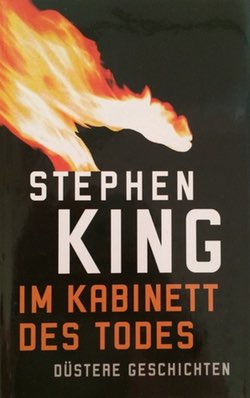 “Autopsy Room Four” 1997, Six Stories
“Autopsy Room Four” 1997, Six Stories
Six Stories was a limited edition King published himself in 1997, and five of the six stories are collected here (the remaining story, “Blind Willie”, was reworked into 1999’s Hearts in Atlantis). In this one, Howard Cottrell is bitten by a fictitious snake, the Peruvian Boomslang, while golfing, and winds up paralyzed on an autopsy table, unable to tell anyone he’s still alive. It’s well-written but even King confesses it’s basically “Breakdown”, a 1955 episode of Alfred Hitchcock Presents, only instead of Joseph Cotton crying a single teardrop to let the pathologist know he’s alive, Howard Cottrell gets a boner.
“The Man in the Black Suit” 1994, New Yorker
An American folktale written as an homage to Nathaniel Hawthorne’s “Young Goodman Brown” this is pure, inauthentic corn about a kid going fishing and meeting the devil in the woods. Full of ten dollar words that feel wrong in your mouth, like “propritiate”, even King calls it “pedestrian” and “humdrum”, yet somehow it won the prestigious O. Henry Best Short Story competition. We live in a strange world.
“All That You Love Will Be Carried Away” 2001, New Yorker
Almost a parody of a New Yorker story, “All That You Love” is about a depressed salesman sitting out a depressing snowstorm, in a depressing motel, trying to decide whether to kill himself or not. The story ends with his decision left ambiguous, a change requested by the New Yorker fiction editor himself who knows which dials to twist to make a straightforward story sound more like something that crawled out of an MFA writer’s workshop. Elmore Leonard once said that you should never start a story with a description of the weather. The first paragraph of this story describes a snowstorm in great detail.
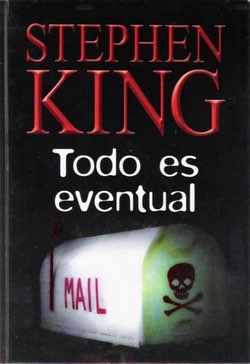 “The Death of Jack Hamilton” 2001, New Yorker
“The Death of Jack Hamilton” 2001, New Yorker
Describing in excruciating detail the slow lingering death of Jack Hamilton, a member of John Dillinger’s gang, whose gunshot wound goes gangrenous. King’s always wanted to be a crime writer, and has a lot of admiration for straightforward masters like Donald E. Westlake. As far back as Skeleton Crew he’s been including crime stories in his collections, like “The Wedding Gig” and “The Fifth Quarter”, an impulse that will culminate with his Mr. Mercedes trilogy.
“In the Death Room” 1999, Blood and Smoke
First collected as part of an audiobook, this is a pulpy men’s adventure-style story about a guy being tortured in a stereotypical South American prison because the evil government minions think he knows information about a local freedom fighter. A quick timekiller with predictable mechanics (guy is tortured with electricity that is introduced in leering fashion, evil woman is “a bitch”, a cigarette in the first pages pays off in the later pages) King says he wanted to take this kind of predictable story and write a version where the guy being tortured gets away. Well, he did. And here it is.
“The Little Sisters of Eleuria” 1998, Legends
A novella set in King’s Dark Tower universe, this story was published a year after The Dark Tower IV: Wizard and Glass and was all the Dark Tower fans would get until 2003’s Wolves of the Calla. It quenched their thirst during a long dry spell, but has become somewhat overrated for what’s basically a version of the Clint Eastwood movie The Beguiled only with added vampires and bugs. By this point in his career, it’s very hard for King to write badly, and so this story is a perfectly fine way to spend an hour or two, but it also feels thin and plastic, probably because it, along with almost every other story in this collection, feels like a riff on a pre-existing piece of pop culture rather something taken from life. Think of EE as a Stephen King waxworks display.
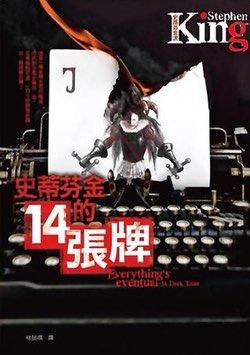 “Everything’s Eventual” 1997, Fantasy and Science Fiction
“Everything’s Eventual” 1997, Fantasy and Science Fiction
Originally slated to be bundled onto F13, a Stephen King game developed by Presto Studios (now defunct) the software was delayed and the story was released in 1997. By 2002, when EE was published, F13 had been released in 2000 and King fans had learned that it was basically three minigames (No Swimming, Bug Splat, Whack-A-Zombie), 20 sound effects, 10 wallpaper images, and seven screensavers. Fortunately, the story is more interesting than the game. An awkward young man named Dinky has the superpower to make people do things by drawing magic sigils, like Grant Morrison, and he’s hired as an employee of the massive and mysterious Trans Corporation. Later, long after the reader has done so, he figures out that they’re using his powers to destroy good people by sending them email. So he quits. It’s a perfectly fine story about people being isolated from the harm their work does by the corporate structures they belong to, and after six so-so stories it’s something of a relief even if it’s not going to change anyone’s life.
“L.T.’s Theory of Pets” 1997, Six Stories
A wife buys her husband a dog, and it hates him. He buys her a cat, and it comes to hate her. Then the wife is killed by a serial killer. King says its his favorite in the collection and he likes to read it at public appearances because it gets the audience laughing, but with a four-page description of a dog and cat fighting, and two pages devoted to a dog throwing up on a guy’s slippers, it feels padded. The ending turns suddenly melancholy, which is nice, but the thing I remember the most from this one is a nasty contempt it shows for its working class characters. No one writes blue collar folks with clear-eyed respect and dignity like King, so it’s surprising to see so many jokes about Elvis paintings and SPAM factory jobs made at the expense of this story’s working class characters. People may laugh at the readings, but I wonder if they’re laughing at these characters rather than with them?
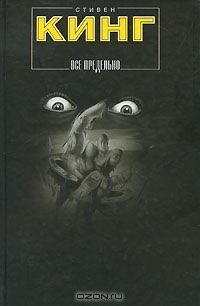 “The Road Virus Heads North” 1999, 999
“The Road Virus Heads North” 1999, 999
Based on a painting King owns that everyone else in his family finds creepy, this is another King story about a magical picture that changes, along the same lines as M.R. James’s “The Mezzotint.” King’s done magical pictures before, most notably in 1995’s Rose Madder. The owner of this picture realizes that the picture is changing as the unsettling person it depicts approaches his house. The creep gets closer, and closer, and closer, and then—boo! He’s got you. This idea was also the basis of King’s novella “The Sun Dog” in 1990’s Four Past Midnight, except there it was a Polaroid camera rather than a painting.
“Lunch at the Gotham Cafe” 1995, Dark Love
Finally: the good stuff. This story, and the three that follow are the best in the book. Written with a hallucinatory clarity, it’s set in a spotlessly polished Upper East Side restaurant that descends into bloody chaos as the maître d’ goes crazy. The narrator is emotionally stretched (he’s finalizing his divorce with his wife over lunch with her lawyer) and he also just gave up smoking after puffing a pack-a-day for 20 years. King knows what it’s like to quit smoking, and the whole story throbs like a blinding headache. Stuffed to bursting with frustration, miscommunication, and misunderstanding, it finally erupts in violence. It’s over-the-top, gory, grotesque, and pretty much perfect.
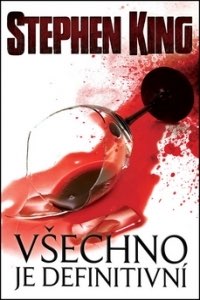 “That Feeling, You Can Only Say What It Is In French” 1998, New Yorker
“That Feeling, You Can Only Say What It Is In French” 1998, New Yorker
King’s got four stories he wrote for the New Yorker in here, and this is the best of the bunch. A woman and her husband are driving to their vacation place in Florida, a setting that pops up in King’s fiction since 1997 when he started spending winters down there. It’s just a husband and a wife in a car, but also not really, and it’s untangling what’s going on that makes this one a fun puzzle. Written in the same clear-cut, slightly surreal language of stories like “Lunch at the Gotham Cafe” and “Why We’re in Vietnam” from Hearts in Atlantis, this is pretty much a perfect match of King’s sensibilities and the highbrow literary requirements of the New Yorker.
“1408” 1999, Blood and Smoke
Even though, as King says in the story intro, this is his version of the well-worn haunted hotel tale (a genre he helped make famous with The Shining) it’s also one of the better stories in this collection and it led to his second-highest-grossing movie of all time, 1408. A writer spends the night in a haunted hotel that turns out to be super-haunted. It’s that simple, but King knocks it out of the park. In a book full of retold stories and riffs on familiar tales, that instinct reaches full bloom in this short story full of familiarity and foreshadowing. And it ends with a man recovering from a terrible injury pondering the sunset, an image that would pop up nine years later in one of his best novels from this period, Duma Key.
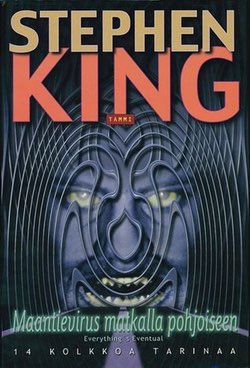 “Riding the Bullet” 2000, ebook
“Riding the Bullet” 2000, ebook
In 2000, King released this story exclusively as a $2.50 download and in the first 24 hours, 400,000 people took him up on his offer. The publishing industry went bananas and “Is This the Future of Books?” articles quickly swamped any evaluation of the story itself, which is a version of that old chestnut about a hitchhiker getting a ride with a dead guy. “Riding the Bullet” twists itself into a reasonably moving meditation on loss as its main character hitchhikes home from college to be by the side of his mother, who’s had a stroke.
“Luckey Quarter” 1995, USA Weekend
A story about a hotel maid who finds a lucky quarter and uses it to get rich in a casino, then it turns out to have been a dream…or was it? Nothing wrong with it, but it’s a short bit of fluff that does nothing more than end the book and continue King’s obsession with the word “booger.”
King was a changed writer by the time this book was published, his devastating accident in 1999 having made him deeply acquainted with the vocabulary of pain and the fragility of the human body, both of which deeply inform Dreamcatcher. He was about to put the Dark Tower epic behind him and move on to other books, entering a late period which is actually really interesting. I’d put this at the bottom of the heap for short stories but it’s really just simple statistics. Keep publishing King’s short stories for long enough and you’re bound to wind up with a collection that’s not very good. It’s guaranteed to happen, eventually.
 Grady Hendrix has written for publications ranging from Playboy to World Literature Today; his previous novel was Horrorstör, about a haunted IKEA, and his latest novel, My Best Friend’s Exorcism, is basically Beaches meets The Exorcist.
Grady Hendrix has written for publications ranging from Playboy to World Literature Today; his previous novel was Horrorstör, about a haunted IKEA, and his latest novel, My Best Friend’s Exorcism, is basically Beaches meets The Exorcist.










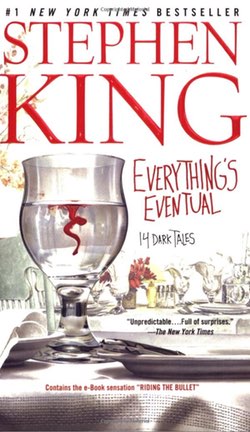
Glad to have you back… but that’s an awfully dangerous objective. I’ve got this feeling that King will pull a Tupac and be producing new works decades after his official “death.”
This is beyond exciting. I didn’t even realize you had even done the second batch in 2015 until just last week.
Much like getting into the Dark Tower after it was published, I got to skip the waiting. Thanks Grady!
Welcome back! Has it bee two years since you did one of these? I go back and reread articles on here so often I don’t have a reasonable sense of any time frame.
I recall really enjoying Riding the Bullet and The Feeling, I’m very blurry on the rest of the book, which usually means bad things.
I think Everythings Eventual (the short story) is the best thing he’s ever written and I was so glad when I saw Dinky again later…. won’t say when or where
This is great! I just picked this book up at a whim at a used book store.
“Everything’s Eventual” is a fun story, but it didn’t blow me away, so I love that you like it so much. Nice to have reinforced to me that it’s all just, like, an opinion, man.
And thanks for the warm welcome back everyone. This oeuvre is going DOWN!
The only one I’ll disagree with you on is The Man in the Black Suit. I read this collection in my first gulp of devouring everything King when I was 12 or 13 and terribly Catholic and nothing was as viscerally terrifying to me as the idea of meeting Satan on a sunny day spent fishing. It’s a very very simple and traditional story but one that has frigging stuck with me for the rest of my life.
I had read the first batch of these, and just thought you gave up. Nice to see all of these back.
I love the melancholy, fatalistic title of “Everything’s Eventual”, but only the high pointed ones you mentioned are the ones I remember. i’m not even sure I finished all of these stories.
Welcome back!
Hey, y’know something really interesting? In “All That You Love Will Be Carried Away”, one of his pieces of graffiti is “Save Russian Jews. Collect Valuable Prizes!”- which somebody in It (I think it was Mike or Stan) notices is scrawled with the other graffiti on the Kissing Bridge.